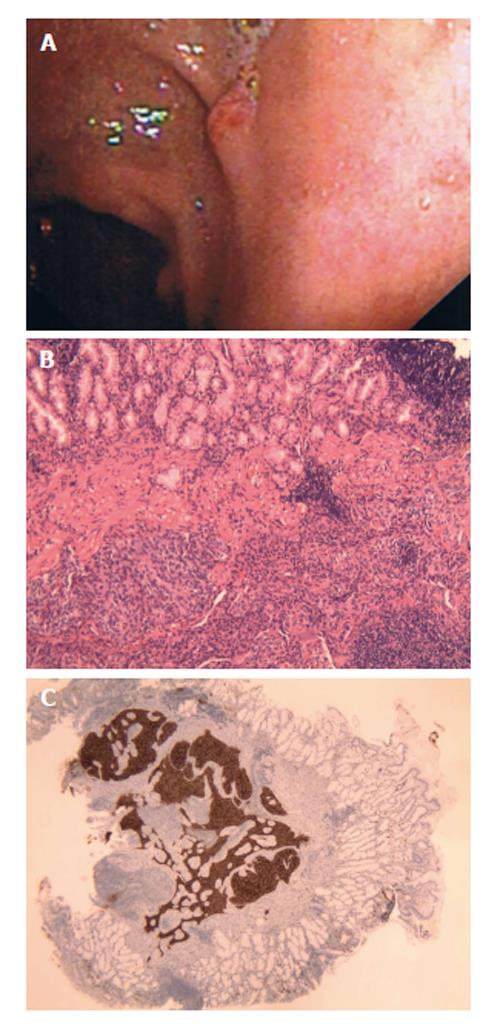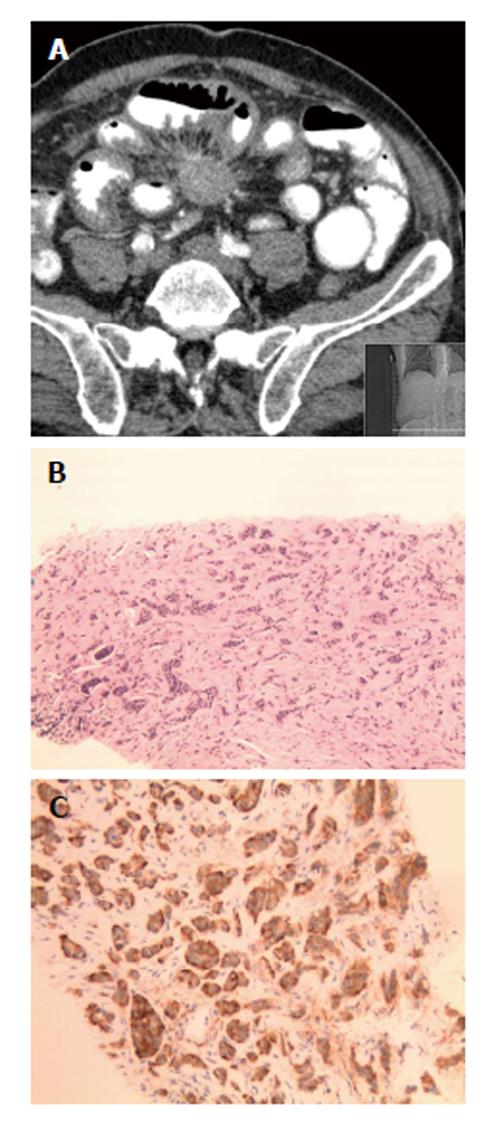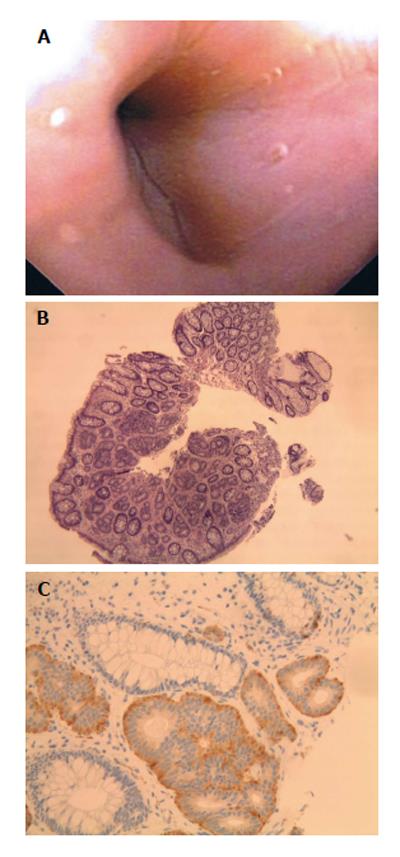Copyright
©2014 Baishideng Publishing Group Inc.
World J Gastrointest Oncol. Aug 15, 2014; 6(8): 301-310
Published online Aug 15, 2014. doi: 10.4251/wjgo.v6.i8.301
Published online Aug 15, 2014. doi: 10.4251/wjgo.v6.i8.301
Figure 1 A 65-year-old female with a history of possible inflammatory bowel disease presented for evaluation of epigastric pain and occasional hematochezia.
A: Patient 1, neuroendocrine (carcinoid) tumors as duodenal nodule at endoscopy; B: Solid growth pattern with organoid architecture and bland monotonous cells with lack of significant atypia and increased mitoses. H and E, × 10; C: Neoplastic neuroendocrine cells show diffuse positivity for Chromogranin. Chromogranin, × 20.
Figure 2 A 70-year-old male presenting with epigastric pain and 15 pound weight loss underwent upper endoscopy revealing chronic esophagitis, hiatal hernia, acute and chronic gastritis involving the antrum, and a small polypoid lesion which was found in the duodenal bulb.
A: Patient 4, neuroendocrine (carcinoid) tumors as solid spiculated mesenteric mass on computed tomography of abdomen; B: Diffuse infiltration by monotonous bland cells with trabecular growth pattern. Mitoses, atypia and necrosis are not identified. H and E, × 10; C: The tumor cells are diffusely and strongly positive for CD56 immunohistochemical stain. CD56, × 20.
Figure 3 A 40-year-old male with recurrent perianal fistulous disease underwent colonoscopy to rule out inflammatory bowel disease.
A: Patient 6, neuroendocrine (carcinoid) tumors as 10 mm ileocecal sessile polyp at colonoscopy; B: Nests of monotonous cells with bland nuclei arranged in organoid pattern. H and E, × 10; C: Carcinoid tumor; Chromogranin A: Marked cytoplasmic positivity.
Figure 4 A 50-year-old female presented for evaluation of gastroesophageal reflux disease and colon cancer screening.
A: Patient 7, neuroendocrine (carcinoid) tumors as sessile sigmoid polyp at colonoscopy; B: Organoid growth pattern with regular bland nuclei with indistinct cell borders. H and E, ×10; C: The neuroendocrine cells are positive for Synaptophysin and adjacent colonic glands are negative. Synaptophysin, × 20.
- Citation: Salyers WJ, Vega KJ, Munoz JC, Trotman BW, Tanev SS. Neuroendocrine tumors of the gastrointestinal tract: Case reports and literature review. World J Gastrointest Oncol 2014; 6(8): 301-310
- URL: https://www.wjgnet.com/1948-5204/full/v6/i8/301.htm
- DOI: https://dx.doi.org/10.4251/wjgo.v6.i8.301












